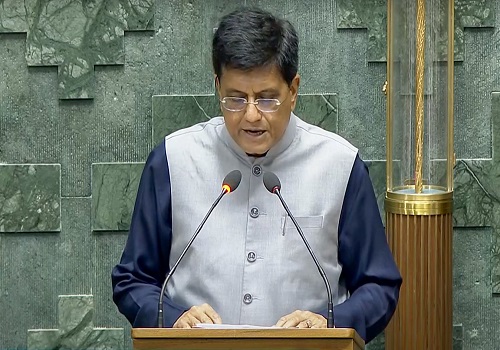Life Insurance Sector Update : UPS muddies annuity opportunity but only in the distant future by Yes Securities Ltd

UPS muddies annuity opportunity but only in the distant future
We try to make sense of the introduction of the Unified Pension Scheme (UPS) for the life insurance industry, which has been a key beneficiary of the mandatory annuitization rule under NPS (see earlier report). We note that (1) The UPS seems superior to the NPS from a subscriber standpoint and, whether mandatory or not, seems set to materially replace the NPS (2) Prima facie, there does not seem to be mandatory annuitization under the UPS and, if so, it is negative for life insurers (3) The conclusion can be potentially more negative if the states follow the Centre in implementing the UPS (4) All of the above being said, the NPS is not quite a dramatic here-and-now opportunity and the impact, if any, is in the distant future. We most prefer MFSL and SBIL in the life insurance space.
The UPS seems superior to the NPS from a subscriber standpoint and, whether mandatory or not, seems set to materially replace the NPS
The UPS comes into existence on 1st April 2025. Pre-existing Central Government employees will have the option to shift to the UPS. It is not clear if new employees joining on or after 1st April 2025 will have the option to opt for the NPS or will have to mandatorily opt for the UPS. Even if the option for the NPS remains, new employees could gravitate towards the UPS, given it superior features. Some of the key advantages of the UPS over the NPS are (1) Higher government contribution to the pension corpus at 18.5% vs 14% (2) Assured Pension of 50% of average basic pay drawn over the last 12 months prior to superannuation (3) Family Pension worth 60% of employee’s pension immediately before their demise (4) Assured Minimum Pension worth Rs 10,000 under the UPS (5) Dearness Relief via Inflation Indexation.
Prima facie, there does not seem to be mandatory annuitization under the UPS and, if so, it is negative for life insurers
Even if NPS AUM were to remain static, we estimate that the June 2024 NPS AUM, excluding Atal Pension Yojna (APS) and NPS Lite (NPSL), translated to a Rs 3816bn annuity business opportunity in the future based on a 40% corpus conversion. This amounted to as much as 127% of the life insurance industry’s new business premium for FY24. However, this opportunity size gets called into question if mandatory annuitization is absent under UPS, which is expected to go on to replace NPS. We note that Central Government employees at 2.64mn account for 18% of subscriber count and 28% of NPS AUM, excluding APS/NPSL If no mandatory annuitization exists, a lion’s share of this 28% of NPS AUM may not get annuitized as subscribers may primarily opt for a here-and-now lump sum withdrawal. It may be noted that the pension corpus under the UPS is to be divided into two funds: (a) an individual pension fund with the 10% employee contribution and matching government contribution and (b) a separate fund with the additional 8.5% government contribution. It remains to be seen whether NPS will have role to play for the individual pension fund.
The conclusion can be potentially more negative if the states follow the Centre in implementing the UPS
We note that State Government employees at 6.69mn account for 45% of subscriber count and 51% of NPS AUM as of June 2024, excluding APS/NPSL. Hence, Government employees, in total, account for 62% of subscriber count and 79% of existing NPS AUM. Hence, nearly three-fourth of NPS AUM is theoretically at risk due to the advent of the UPS. It may be noted that, some states, viz. Rajasthan, Punjab and Himachal Pradesh, had already previously chosen not to continue with the NPS and had, in fact, reverted to the Old Pension Scheme (OPS).
All of the above being said, the NPS is not quite a dramatic here-and-now opportunity and the impact, if any, is in the distant future
We note that 84% of NPS subscribers, on average, who have enrolled over FY20-22 are below 40 years of age. Assuming that this proportion would have been similar in the past, most of the NPS subscriber base would still have a lot of time before they retire.
We continue to most prefer MFSL and SBIL in the life insurance space
This report also contains a detailed comparison of life insurers across varied parameters.
Please refer disclaimer at https://yesinvest.in/privacy_policy_disclaimers
SEBI Registration number is INZ000185632.










Tag News

Shriram Life Launches Flexi Shield: ?Your Term Plan On Your Terms?



More News

Oil and Gas Sector Update : LPG compensation of INR 300bn significant +ve for OMCs; upgrade ...









